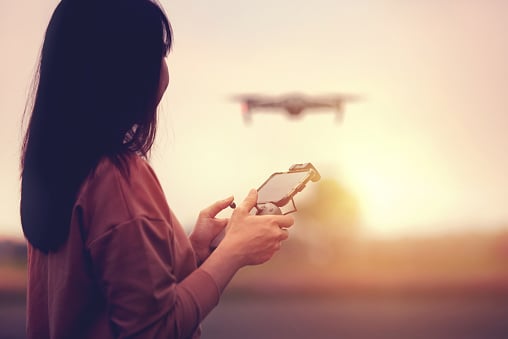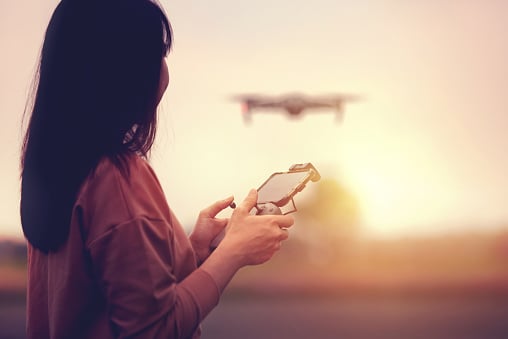How to Fly a Drone (For Beginners)

Being a first-time flyer is exciting and overwhelming at the same time. Depending on the drone model you purchased, you can choose different functions and features to use during your flight.

Before you get started, we recommend you familiarize yourself with your drone and its unique features, and how well the drone reacts to the controller you are using.
There will be plenty of opportunities to perform tricks and take cool footage later–as a novice, your first priority should be to learn how to have good control over your equipment and avoid crashes.
Before you begin practicing, make sure you are in an open area with minimal obstacles, like trees, overhangs, roofs, or bridges. Also consider flying in an open field or grassy area, if possible. When learning to fly, it’s possible that you may lose control of the drone and crash. By flying in a field or in the grass, you minimize the potential damage that can be inflicted on your drone.
You want to start with basic commands like up, down, left, right, and yaw.
It seems easy at first, but each controller will affect how a drone will respond to the commands. Learn how to ascend and descend properly, and familiarize yourself with the latency between your command and the drone’s movement. If you ascend or descend too quickly, you could lose control of the aircraft, especially if there is a gust of wind that throws off your drone.
Flying to the left and right is pretty easy, but in order to navigate properly, you have to understand how to yaw. To yaw is to change or rotate along the vertical axis; essentially, it is the direction that your aircraft is facing. Let’s say you're flying your drone forward, and suddenly want to go left–you can fly your drone to the left, but the front of the drone (or the camera) will continue to face forward, rather than left. In order to turn the drone, you have to rotate the direction of the front of the aircraft; this is your yaw motion.
.png?width=345&name=DJI%20Mini%203%20Pro%20(20).png)
Lastly, if your drone has the RTH (Return to Home) feature, like the DJI Mavic Air 2 or the DJI Mini 2, you want to make sure you set your RTH altitude properly. RTH is an incredible feature that is useful if your drone and the RC lose connection. Because RTH is automatic, you want to make sure you set the proper altitude before you begin flying otherwise, you risk losing or crashing your drone, or even risk penalties due to altitude violations (this depends on the area where you are flying).
To recap, these are the three steps to getting started with flying a drone:
- Search for an open space with minimal obstructions in sight.
- Practice the five main directions; up, down, left, right, and yaw.
- Remember to set your RTH altitude before you begin flying.
Need some beginner drones to start with? Check these out:
